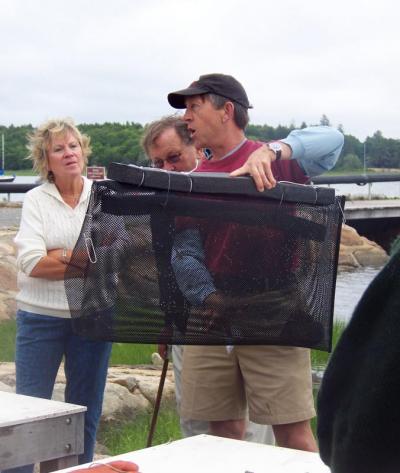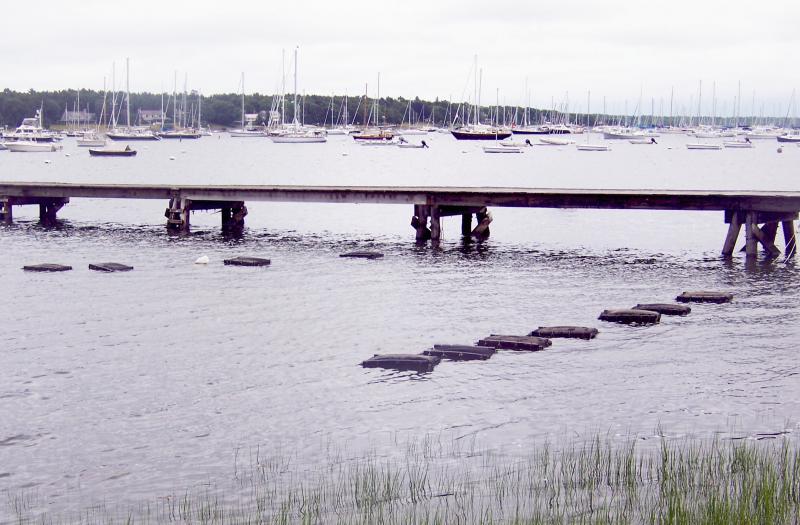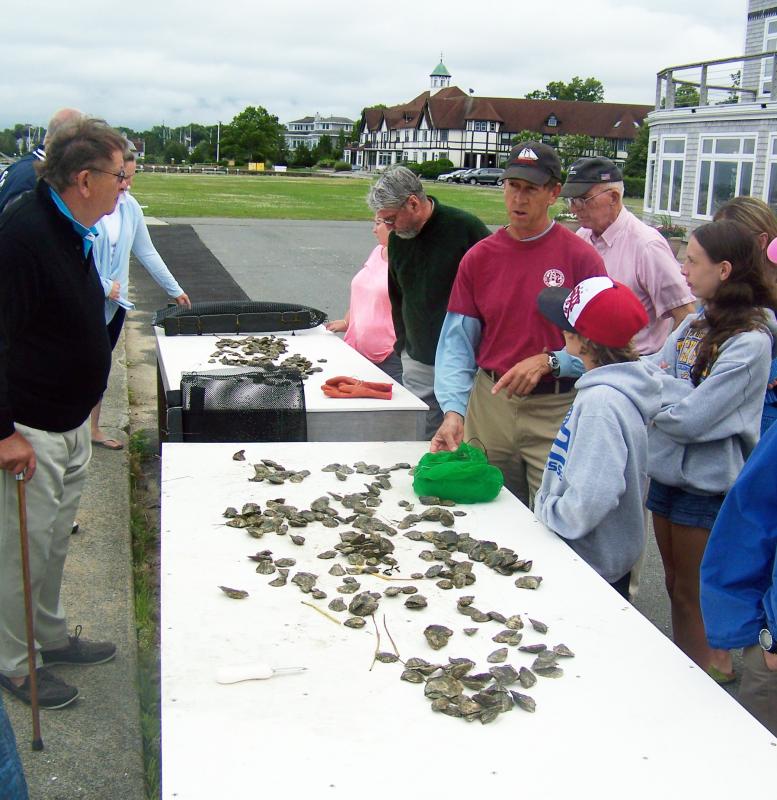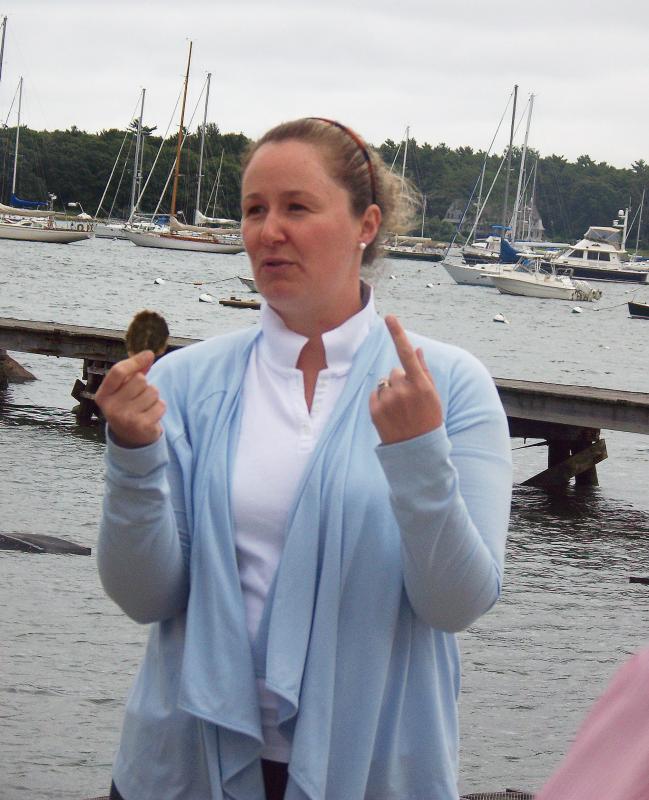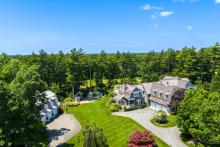Open house gives residents glimpse of Tabor's oyster farm
The crowd that attended Tabor Academy’s oyster farm open tour had a lot of questions about the project, including, “When will they be ready to eat?”
According to Nautical Department Chair David Bill, the farm-grown oysters will be large enough for harvest by this fall. But if residents want to dine on the locally grown shellfish they’ll have to do some digging.
Bill spoke at an open house the school hosted on Thursday evening alongside marine science teacher Elizabeth Leary.
In 2013, Tabor officials collaborated with Marion Shellfish Officer Isaac Perry and members of the Harbormaster Department to secure approval for the farm from the town and state.
Using 1,000 seed oysters donated from the town, Bill, Leary and students began to cultivate the mollusks. Several oysters were on display on a table near the farm to demonstrate the progress made.
The farm gives students a chance to perform hands-on fieldwork related to the shellfish industry. It’s located in a half-acre of harbor near the school’s marine science lab.
Lessons learned on the farm are also incorporated into the school’s marine science and life science classes.
Leary said students have dissected oysters to learn about their biology. There are also practical lessons on how to keep the oysters healthy in the water.
The town’s shellfish propagation program has benefitted, too.
The farm is officially a “grow out” area for the town. Oysters will be placed on Marion’s shore once they mature. Then, those who are licensed to harvest the shellfish can collect the oysters after the season opens.
Bill explained that in Marion the season starts in September and ends in April. Regarding oysters, there’s a saying that they should only be eaten if gathered during a month that has the letter “R.”
Attendees wanted to know, is there any truth to that? Bill said it depends.
“To some extent that’s true,” he said. “In Marion, the oyster season is very specific because the harbor’s shallow waters heat up in the summer, which can lead to bacteria getting into the oysters.”
Waters off Cape Cod are generally cooler and that rule need not apply in certain areas.
The talk then turned away from culinary pursuits to questions of cultivation. Right now, the oysters are in floating cages. Bill and Leary noted the oysters are hearty, able to withstand temperature extremes and can survive a winter in the harbor if below ice.
That’s not the case when they are seeds. Students and faculty learned that growing seeds in the lab is difficult.
“It’s a bit of an art and a bit of science to get the seeds to grow in artificial conditions,” Bill said.
Tabor's farm is one of three licensed to grow oysters in the harbor. Bill stressed that Tabor's farm is not commercial in nature. Shellfish aficionados will have to work if they want the local oysters.
“We can't shuck the oysters and feed them to you,” Bill said. “If you want them, you'll have to know where the [oyster] beds are.”
The Sippican Lands Trust provided funding for the event.



